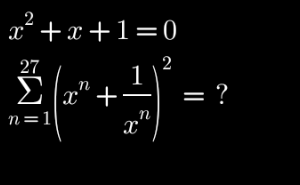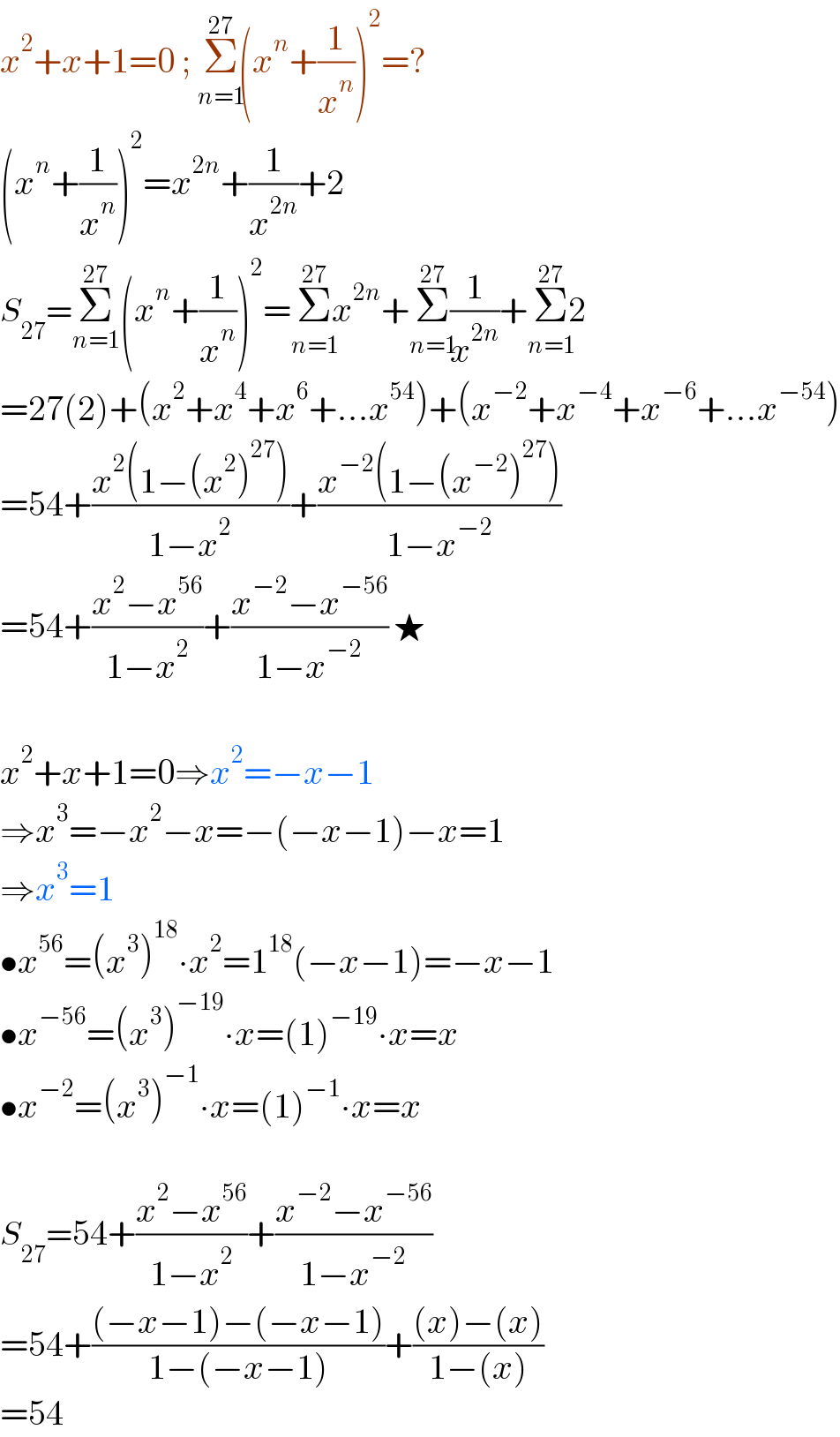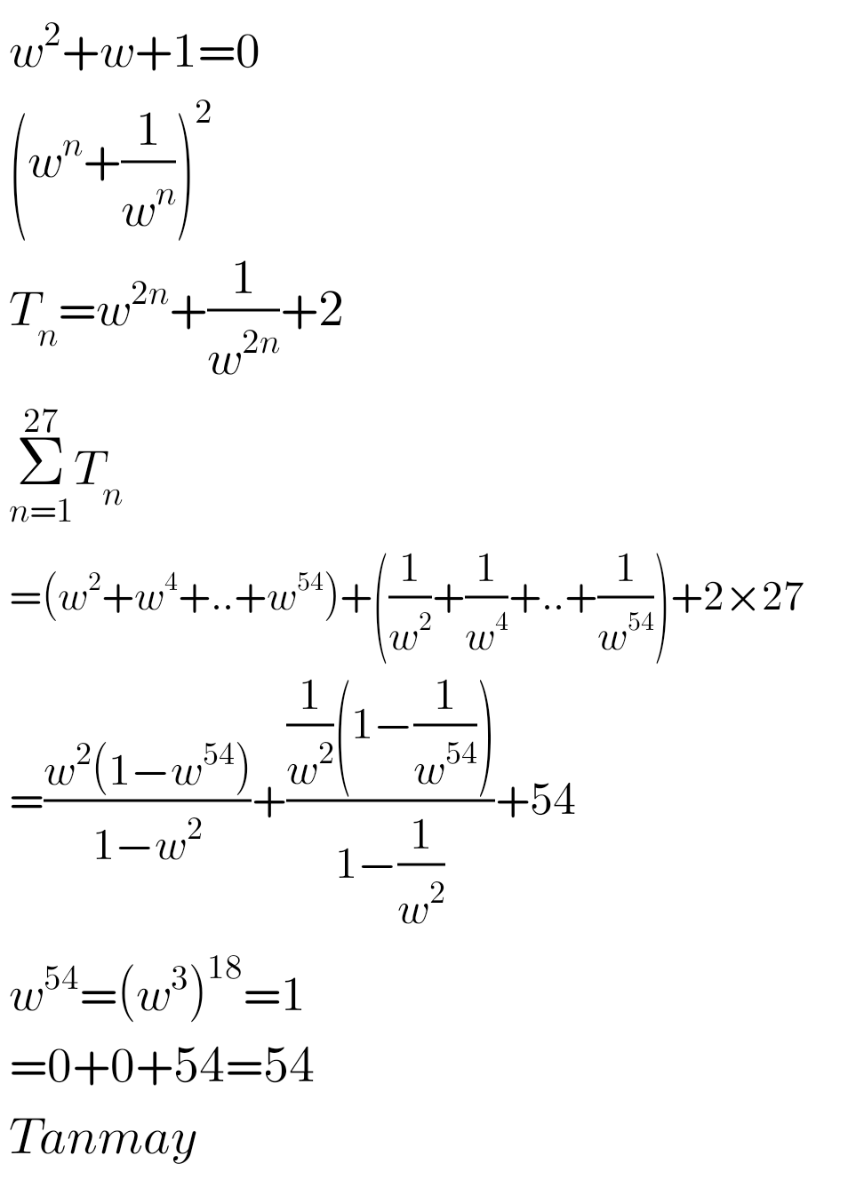
Question and Answers Forum
Question Number 182973 by HeferH last updated on 17/Dec/22

Answered by Rasheed.Sindhi last updated on 18/Dec/22

Commented by Rasheed.Sindhi last updated on 18/Dec/22

Answered by TANMAY PANACEA last updated on 18/Dec/22

Commented by mr W last updated on 18/Dec/22

Commented by Rasheed.Sindhi last updated on 18/Dec/22

Answered by TheSupreme last updated on 18/Dec/22
![x+1+(1/x)=0 →(1/x)=−x−1 Σ_(n=1) ^(27) x^(2n) +(1/x^(2n) )+2= =((1−x^(2∗27−1) )/(1−x))−1+((1−(1/x^(2∗27−1) ))/(1−(1/x)))−1+2∙27= =((1−x^(53) )/(1−x))−((1−x^(53) )/(x^(52) (1−x)))+52 =((1−x^(53) )/(1−x))[1−(1/x^(52) )]+52= = x^2 +x+1=0→x_(1,2) =((−1±(√(−3)))/2)=e^(±(π/3)i) Σ(e^(k(π/3)i) +e^(−k(π/3)i) )^2 =Σ4cos^2 (k(π/3))= =Σ_(n=1) ^9 4cos^2 (0)+4cos^2 ((π/3))+4cos^2 ((2π)/3)= =4Σ_(n=1) ^9 1+(1/4)+(1/4)=6∙9 =54](Q183002.png)
